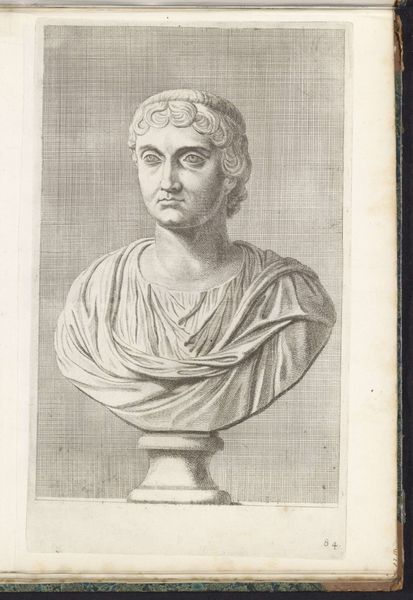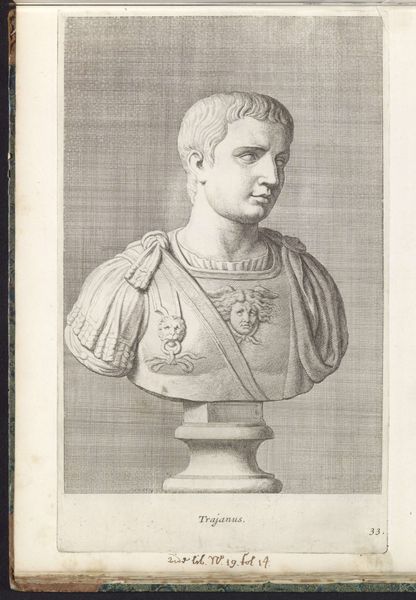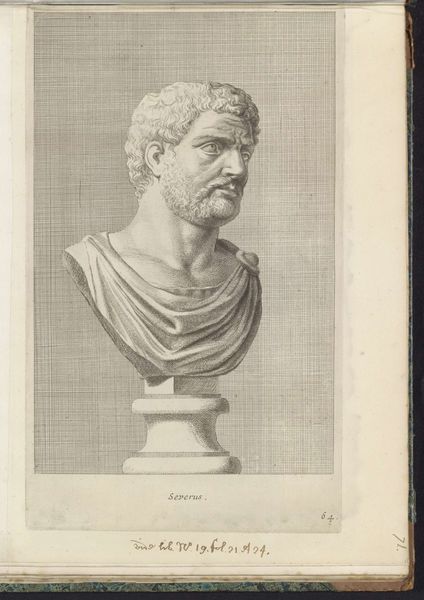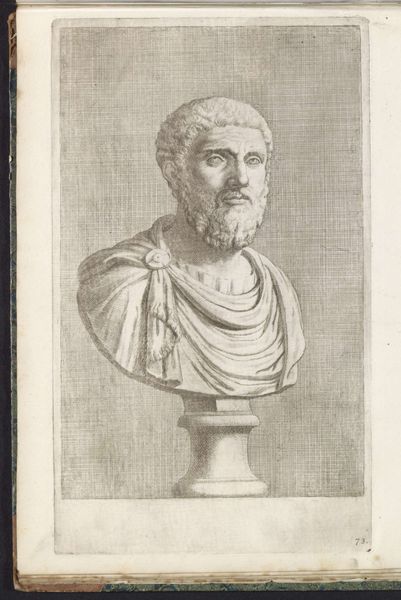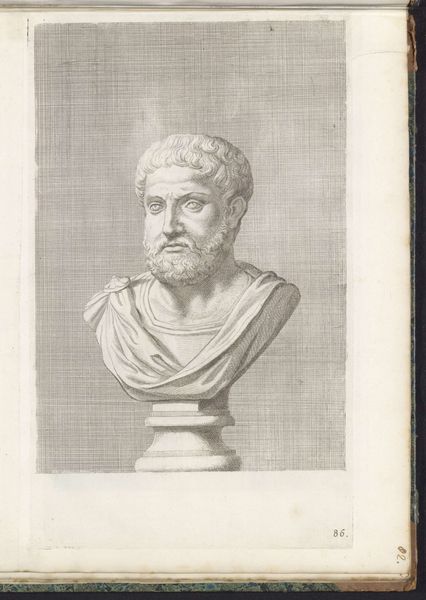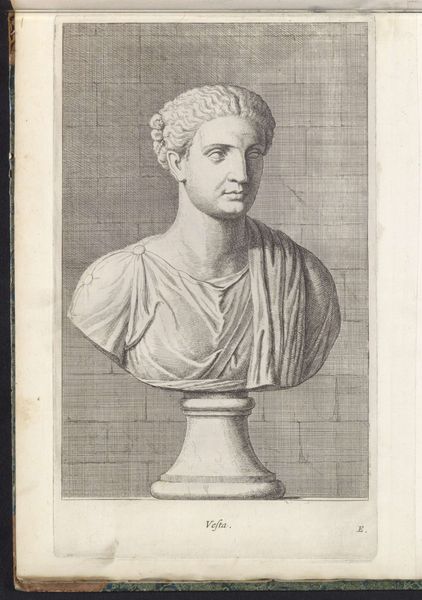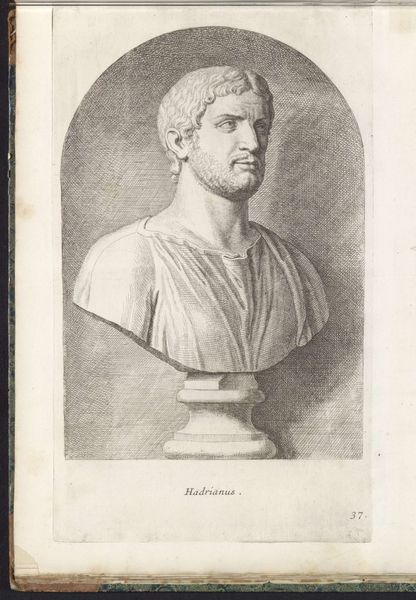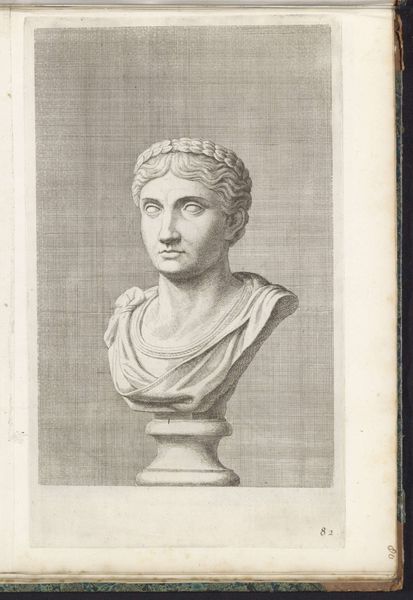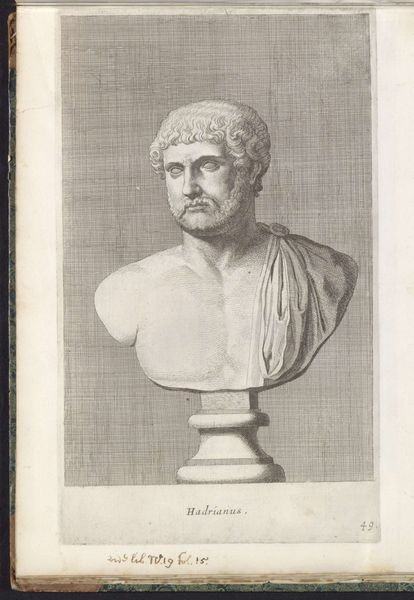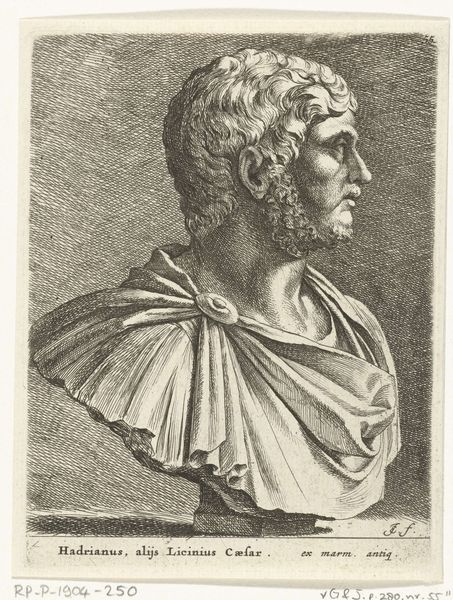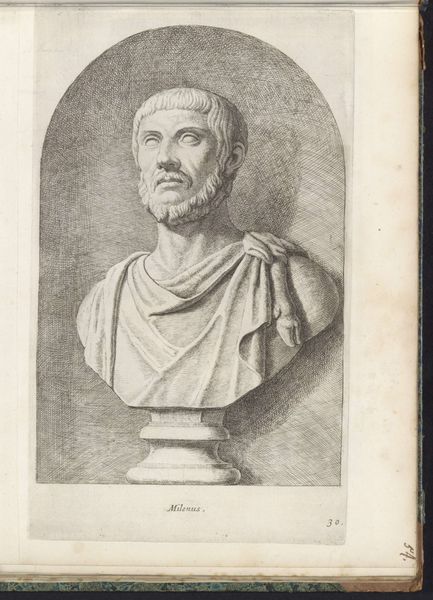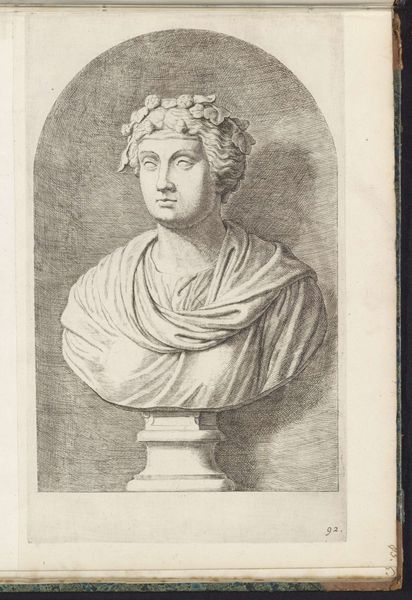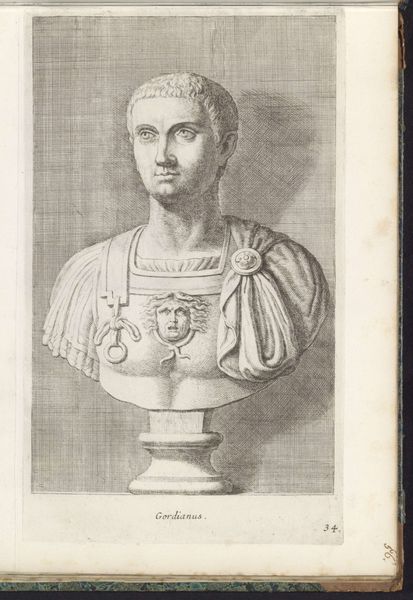
engraving
#
portrait
#
baroque
#
greek-and-roman-art
#
history-painting
#
engraving
Dimensions: height 325 mm, width 195 mm
Copyright: Rijks Museum: Open Domain
Editor: Here we have Hubert Quellinus's engraving, "Buste van een jonge man in toga, naar links," created sometime between 1646 and 1670. It's currently housed at the Rijksmuseum. What strikes me is its simplicity, almost stoic nature. What kind of cultural currents do you see influencing a piece like this? Curator: Well, considering the timeframe, and Quellinus's clear interest in rendering a classical bust, it's deeply embedded in the Baroque period's reinterpretation of classical antiquity. Notice how the "young man" is styled in a Roman toga. It wasn't just about aesthetic imitation. This sort of imagery often served to connect the sitter—or perhaps, the aspirational values of the work's commissioner—to the power and prestige of Roman virtue, authority and its Republican past. It presents the "young man" as a type, rather than a specific individual. What's compelling about that? Editor: I hadn't considered the aspirational angle. The piece now speaks less about capturing likeness, and more about constructing a kind of idealized identity. It's less personal, more political, wouldn’t you agree? Curator: Exactly! And think about where an engraving like this might circulate. Not necessarily as fine art on a gallery wall. Consider who controlled image-making and distribution at the time. It served as a vital instrument of social and political messaging. These images helped shape perceptions of history, morality, and even ideal leadership. The question is, for whom and for what purpose were images of virtuous leaders created? Editor: That's really shifted my understanding of the work. I initially just saw it as a simple bust, but the idea that it's engaging in image construction for broader social impact gives it much more meaning. Curator: Precisely. And reflecting on art this way brings us a much deeper understanding of the intersection between artistic practices and social power! Editor: Definitely. I will never look at a portrait in the same way again! Thanks!
Comments
No comments
Be the first to comment and join the conversation on the ultimate creative platform.
